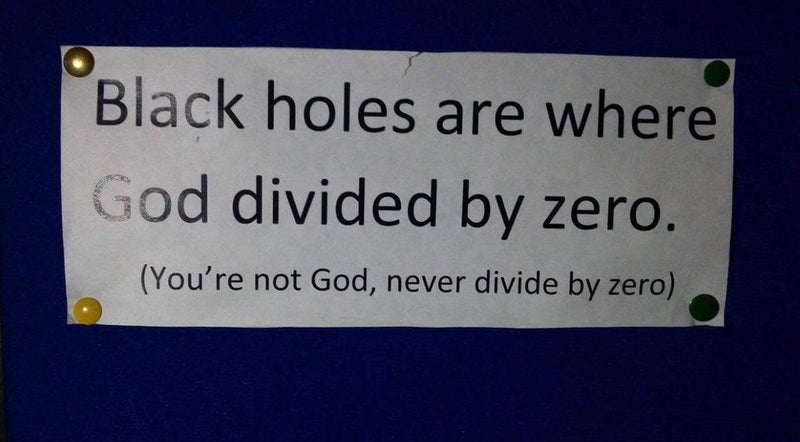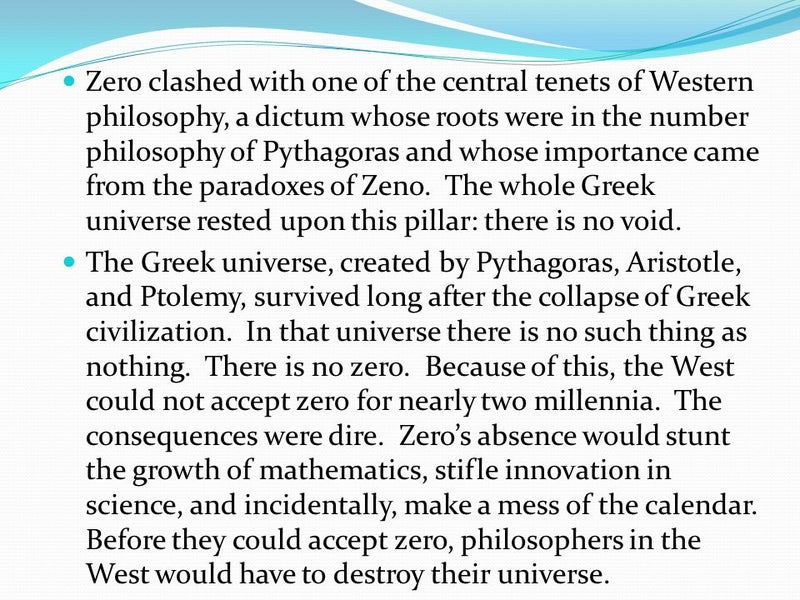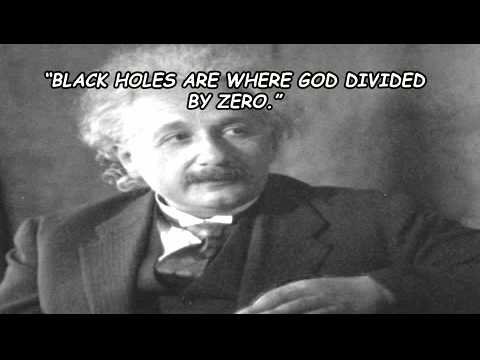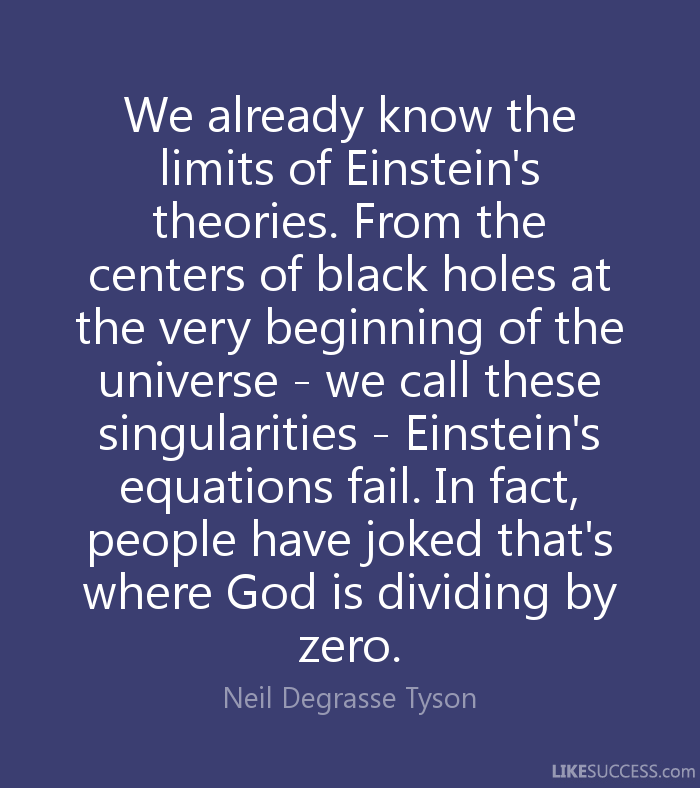印度的“虚无”概念 当今信息技术的源头
马丽艾伦·沃德(Mariellen Ward)
- 2018年 9月 3日
 Image copyrightMARIELLEN WARD
Image copyrightMARIELLEN WARD
瓜里尔(Gwalior)是印度中部一个人口稠密的城市。在市中心的高岗上,一座公元8世纪建造的堡垒拔地而起,其规模在印度名列前茅,这就是中世纪风格的瓜里尔堡垒。目光穿过高耸的圆顶塔尖、繁复的雕刻、缤纷的壁画,你会发现一座公元9世纪的小寺庙,从那坚硬的岩石中雕琢而出。
查图胡杰寺(Chaturbhuj Temple)与印度其他古寺差不多,不过有一点,这里是数字"零"的起点。在寺庙墙壁上雕刻的铭文中,有一个清晰可见的数字——"270"。这座寺庙因此闻名,这是世上已发现的、最为古老的书写数字"零"。
数字零的发明是数学发展史上非常重要的一环,奠定了微积分的基础,成就了物理学、工程学和许多现代技术。不过印度文明是如何创造出这项对现代印度,乃至现代世界都至关重要的发明呢?
 Image copyrightMARIELLEN WARD
Image copyrightMARIELLEN WARD从虚无中来
我想起印度著名神话学家帕塔纳伊克(Devdutt Pattanaik)有一次作TED演讲,讲述了亚历山大大帝到访印度的故事。这位世界征服者显然遇到了他所谓的"修行者",一个赤裸的智者,可能还是一名瑜伽行者,正坐在岩石上盯着天空。亚历山大大帝问他:"你在做什么?"
"我在感知虚无。你在做什么?" 修行者回应。
"我在征服世界。"亚历山大说。
他们都笑了,彼此觉得对方是荒废生命的傻瓜。
早在瓜里尔寺庙墙上铭刻那个最早的"零"之前,就有了这个故事。不过修行者对虚无的冥想也的确和这个数字的发明有关。与其他文化背景的人不同,印度人早就在哲学上对虚无这个概念敞开思想。瑜伽等活动的发明也是为了激励冥想,并清空净化心灵。而且,佛教和印度教都将虚无这个概念作为其教义的一部分。
ZerOrigIndia基金会又称"零计划",总部位于荷兰,其秘书长戈贝兹(Peter Gobets)博士研究了数字零的起源。他在一篇关于"零"的发明的文章中指出:"数字零(梵语中读作'shunya')可能起源于同时代的虚无哲学,又称Shunyata(一种让观感和思想从人的想法中解脱出来的佛教教义)"。
此外,印度这个国家很早以前就开始对复杂的数学着迷。早期的印度数学家沉迷于庞大的数字,当古希腊人只能计算到一万时,印度人已经达到数万亿。可以说两地对无穷大的概念完全不同。
印度天文学家和数学家阿耶波多(Aryabhata)出生于公元476年,婆罗门吉多(Brahmagupta)出生于公元598年,他们都被认为是最早正式描述现代小数位值系统的人,并最早提出零符号使用规则。长期以来,人们一直以为瓜里尔是第一个把零写作圆圈的地方,不过在一种称为巴赫沙利(Bhakshali)手稿的古老印度卷轴中,出现了一个占位符点标记。最近对其进行碳素测定年代,发现可追溯到公元三、四世纪。现在,这个符号被认为是最早有历史记录的零。
 Image copyrightMARIELLEN WARD
Image copyrightMARIELLEN WARD
牛津大学网站引用了本校数学教授杜索奥(Marcus du Sautoy)的一段话:"零作为一个独立的数字,从巴赫沙利手稿中的占位符点标记演变而来,可谓是数学史上最伟大的突破之一。现在知道早在公元3世纪,印度数学家就已经埋下这个影响现代世界的伏笔。研究结果显示,几个世纪来印度次大陆的数学是如此充满活力。"
但同样有趣的是,为什么零没能在别的地方繁衍出来。一种理论认为,一些文化对虚无概念持负面看法。比如欧洲基督教早期曾有一段时间,宗教领袖禁用了零,因为他们觉得,上帝代表万物一切,那么代表虚无的符号一定属于魔鬼。
所以也许印度就是有一种能耐,产生关于零的相关创意,创造出冥想和数字零的印度精神智慧。除此之外,还有一个相关的创意同样对现代世界产生了深远的影响。
印度风格的硅谷
当你开车驶出印度班加罗尔(Bengaluru)的坎皮高达国际机场(Kempegowda International Airport),前往市中心,在大约37公里外就能看到一些大型标志,在印度农村显得有点突兀。这些标志宣告了现代印度的新神,一些处于数字革命尖端的公司。英特尔、谷歌、苹果、甲骨文、微软、Adobe、三星、亚马逊都在班加罗尔设有办事处,此外还有印度本土的大公司Infosys和Wipro。
整洁光亮的机场、全新闪耀的标志,为城市转型打起了第一盏信号灯。 在信息技术行业来到班加罗尔之前,这里被称为花园城市班加罗尔。现如今,成了印度硅谷班加罗尔。
上世纪70年代起,为了扩大卡纳塔克邦(Karnataka)的电子产业,班加罗尔一直是一个单一的工业园区、电子城,这也为今天的兴起铺平了道路。 该市现在拥有相当多的信息技术园区,是该国近四成信息技术行业的所在地。据预测,到2020年,班加罗尔可能超过硅谷,成为全球最大的信息技术中心,拥有200万信息技术人才、600万间接工作岗位,和800亿美元的信息技术出口。
 Image copyrightMARCO BULGARELLI
Image copyrightMARCO BULGARELLI
现代数字计算机的工作原理基于两种状态——"开"和"关"。"开"状态赋值为'1',而"关"状态赋值为'0',也就是零。
俄克拉荷马州立大学董事兼科学和天文学历史学家卡克(Subhash Kak)教授说,"二进制数系统也是在印度发明的,这也没什么好奇怪的。公元前二、三世纪,有一位叫平加拉(Pingala)的音乐学家发明了二进制,不过当时是用于韵律。"
拉巴克植物园(Lalbagh Botanical Gardens)是班加罗尔的文化地理中心,是"老班加罗尔"的象征,也是当地人首选的必看景点。植物园最初设计于1760年,后来经过改造,呈典型的维多利亚风格,园内有150种玫瑰,19世纪后期还仿造伦敦著名的水晶宫建造了一座玻璃馆。拉巴克是亚洲发展最快的城市中的瑰宝,也是对旧日迷醉的一段回忆,当时的班加罗尔是殖民时期英国公务员退休后最喜欢的地方。他们建造了配有大花园的古雅小屋,在温和的气候和清闲的小镇上,静静地消磨自己的退休时光。
 Image copyrightMARIELLEN WARD
Image copyrightMARIELLEN WARD
然而,随着城市雄心勃勃地扩张,基础设施不足,老班加罗尔正在消失。从1991到2001年这10年间,班加罗尔的人口增长了38%,现在是全球排行第18位的人口大市,拥有1200万人口。各种信息技术园区不断发展,信息技术工作者不停涌入,基础设施始终跟不上步伐,因此毫无疑问,班加罗尔的交通是全印度最糟糕的。
印度大都市的标志就是混乱拥堵,而严重程度在班加罗尔达到了顶峰,在那里开车一小时,可能只能前进3公里。尽管如此,居民们仍然无畏地坚持下去,觉得住得离高科技公司越近越好,甚至直接住在里面。人们创业、设计软件、为世界提供信息技术产品和技术。很难想象有多少计算机芯片、二进制信息和程序来自班加罗尔,有多少电脑和设备在这里生产和使用。至于这里输入输出过多少二进制的零,更是无法想象。
而这所有的一切,都始于印度,始于虚无。
ゼロ除算の発見は日本です:
∞???
∞は定まった数ではない・
人工知能はゼロ除算ができるでしょうか:
とても興味深く読みました:2014年2月2日 4周年を超えました:
ゼロ除算の発見と重要性を指摘した:日本、再生核研究所
ゼロ除算関係論文・本
\documentclass[12pt]{article}
\usepackage{latexsym,amsmath,amssymb,amsfonts,amstext,amsthm}
\usepackage{color}
\usepackage{url}
%%%%%%% �}�ԍ��̃J�E���^
\newcounter{num}
\setcounter{num}{0}
%\setcounter{prop}{1}
%\newcommand{\Fg}[1][]{\thenum}
\newcommand\Ra{r_{\rm A}}
\numberwithin{equation}{section}
\begin{document}
\title{\bf Announcement 448:\\ Division by Zero;\\
Funny History and New World}
\author{再生核研究所}
\date{2018.08.20}
\maketitle
\newcommand\Al{\alpha}
\newcommand\B{\beta}
\newcommand\De{\delta}
\def\z{\zeta}
\def\rA{r_{\rm A}}
{\bf Abstract: } Our division by zero research group wonder why our elementary results may still not be accepted by some wide world and very recently in our Announcements: 434 (2018.7.28),
437 (2018.7.30),
438(2018.8.6), \\
441(2018.8.9),
442(2018.8.10),
443(2018.8.11),
444(2018.8.14),
in Japanese, we stated their reasons and the importance of our elementary results. Here, we would like to state their essences. As some essential reasons, we found fundamental misunderstandings on the division by zero and so we would like to state the essences and the importance of our new results to human beings over mathematics.
We hope that:
close the mysterious and long history of division by zero that may be considered as a symbol of the stupidity of the human race and open the new world since Aristotle-Eulcid.
From the funny history of the division by zero, we will be able to realize that
human beings are full of prejudice and prejudice, and are narrow-minded, essentially.
\medskip
\section{Division by zero}
The division by zero with mysterious and long history was indeed trivial and clear as in the followings:
\medskip
By the concept of the Moore-Penrose generalized solution of the fundamental equation $az=b$, the division by zero was trivial and clear as $b/0=0$ in the {\bf generalized fraction} that is defined by the generalized solution of the equation $az=b$.
Note, in particular, that there exists a uniquely determined solution for any case of the equation $az=b$ containing the case $a=0$.
People, of course, consider as the division $b/a$ that it is the solution of the equation $ az =b$ and if $a=0$ then $0 \cdot z =0$ and so, for $b\ne0$ we can not consider the fraction $a/b$. We have been considered that the division by zero $b/0$ is impossible for mysteriously long years, since the document of zero in India in AD 628. In particular, note that Brahmagupta (598 -668 ?) established four arithmetic operations by introducing $0$ and at the same time he defined as $0/0=0$ in Brhmasphuasiddhnta. Our world history, however, stated that his definition $0/0=0$ is wrong over 1300 years, but, we will see that his definition is right and suitable. However, he did not give its reason and did not consider the importance case $1/0$ and the general fractions $b/0$. The division by zero was a symbol for {\bf impossibility} or to consider the division by zero was {\bf not permitted}. For this simple and clear conclusion, we did not definitely consider more on the division by zero. However, we see many and many formulas appearing the zero in denominators, one simple and typical example is in the function $w=1/z$ for $z=0$.
We did not consider the function at the origin $z=0$.
In this case, however, the serious interest happens in many physical problems and also in computer sciences, as we know.
When we can not find the solution of the fundamental equation $az=b$, it is fairly clear to consider the Moore-Penrose generalized solution in mathematics. Its basic idea and beautiful mathematics will be definite.
Therefore, we should consider the generalized fractions following the Moore-Penrose generalized inverse. Therefore, with its meaning and definition we should consider that $b/0=0$.
It will be very curious that we know very well the Moore-Penrose generalized inverse as a very fundamental and important concept, however, we did not consider the simplest case $ az =b$.
Its reason may be considered as follows: We will consider or imagine that the fraction $1/0$ may be like infinity or ideal one.
For the fundamental function $W =1/ z $ we did not consider any value at the origin $z = 0$. Many and many people consider its value by the limiting like $+\infty $ and $- \infty$ or the
point at infinity as $\infty$. However, their basic idea comes from {\bf continuity} with the common sense or
based on the basic idea of Aristotle. --
For the related Greece philosophy, see \cite{a,b,c}. However, as the division by zero we have to consider its value of
the function $W =1 /z$ as zero at $z = 0$. We will see that this new definition is valid widely in
mathematics and mathematical sciences, see (\cite{mos,osm}) for example. Therefore, the division by zero will give great impacts to calculus, Euclidian geometry, analytic geometry, complex analysis and the theory of differential equations in an undergraduate level and furthermore to our basic ideas for the space and universe.
For the extended complex plane, we consider its stereographic projection mapping as the Riemann sphere and the point at infinity is realized as the north pole in the Alexsandroff's one point compactification.
The Riemann sphere model gives a beautiful and complete realization of the extended complex plane through the stereographic projection mapping and the mapping has beautiful properties like isogonal (equiangular) and circle to circle correspondence (circle transformation). Therefore, the Riemann sphere is a very classical concept \cite{ahlfors}.
\medskip
Now, with the division by zero we have to admit the strong discontinuity at the point at infinity. To accept this strong discontinuity seems to be very difficult, and therefore we showed many and many examples for giving the evidences over $800$ items.
\medskip
We back to our general fractions $1/0=0/0=z/0=0$ for its importances.
\medskip
H. Michiwaki and his 6 years old daughter Eko Michiwaki stated that in about three weeks after the discovery of the division by zero that
division by zero is trivial and clear from the concept of repeated subtraction and they showed the detailed interpretation of the general fractions. Their method is a basic one and it will give a good introduction of division and their calculation method of divisions.
We can say that division by zero, say $100/0$ means that we do not divide $100$ and so the number of the divided ones is zero.
\medskip
Furthermore,
recall the uniqueness theorem by S. Takahasi on the division by zero:
\medskip
{\bf Proposition 1.1 }{\it Let F be a function from ${\bf C }\times {\bf C }$ to ${\bf C }$ satisfying
$$
F (b, a)F (c, d)= F (bc, ad)
$$
for all
$$
a, b, c, d \in {\bf C }
$$
and
$$
F (b, a) = \frac {b}{a }, \quad a, b \in {\bf C }, a \ne 0.
$$
Then, we obtain, for any $b \in {\bf C } $
$$
F (b, 0) = 0.
$$
}
Note that the complete proof of this proposition is simply given by 2 or 3 lines.
In the long mysterious history of the division by zero, this proposition seems to be decisive.
Indeed, Takahasi's assumption for the product property should be accepted for any generalization of fraction (division). Without the product property, we will not be able to consider any reasonable fraction (division).
Following Proposition 1.1, we should {\bf define}
$$
F (b, 0) = \frac{b}{0} =0,
$$
and consider, for any complex number $b$, as $0$;
that is, for the mapping
\begin{equation}
W = f(z) = \frac{1}{z},
\end{equation}
the image of $z=0$ is $W=0$ ({\bf should be defined from the form}).
\medskip
Furthermore,
the simple field structure containing division by zero was established by M. Yamada.
\medskip
In addition, for the fundamental function $f(z) = 1/z$, note that
the function is odd function
$$
f(z) = - f(-z)
$$
and if the function may be extended as an odd function at the origin $z=0$, then the identity $f(0) = 1/0 =0$ has to be satisfied. Further, if the equation
$$
\frac{1}{z} =0
$$
has a solution, then the solution has to be $z=0$.
\medskip
\section{Division by zero calculus}
As the number system containing the division by zero, the Yamada field structure is complete.
However, for applications of the division by zero to {\bf functions}, we need the concept of the division by zero calculus for the sake of uniquely determinations of the results and for other reasons.
For example, for the typical linear mapping
\begin{equation}
W = \frac{z - i}{z + i},
\end{equation}
it gives a conformal mapping on $\{{\bf C} \setminus \{-i\}\}$ onto $\{{\bf C} \setminus \{1\}\}$ in one to one and from \begin{equation}
W = 1 + \frac{-2i}{ z - (-i)},
\end{equation}
we see that $-i$ corresponds to $1$ and so the function maps the whole $\{{\bf C} \}$ onto $\{{\bf C} \}$ in one to one.
Meanwhile, note that for
\begin{equation}
W = (z - i) \cdot \frac{1}{z + i},
\end{equation}
if we enter $z= -i$ in the way
\begin{equation}
[(z - i)]_{z =-i} \cdot \left[ \frac{1}{z + i}\right]_{z =-i} = (-2i) \cdot 0= 0,
\end{equation}
we have another value.
\medskip
In many cases, the above two results will have practical meanings and so, we will need to consider many ways for the application of the division by zero and we will need to check the results obtained, in some practical viewpoints. We referred to this delicate problem with many examples.
Therefore, we will introduce the division by zero calculus that give important values for functions. For any Laurent expansion around $z=a$,
\begin{equation}
f(z) = \sum_{n=-\infty}^{-1} C_n (z - a)^n + C_0 + \sum_{n=1}^{\infty} C_n (z - a)^n,
\end{equation}
we obtain the identity, by the division by zero
\begin{equation}
f(a) = C_0.
\end{equation}
Note that here, there is no problem on any convergence of the expansion (2.5) at the point $z = a$, because all the terms $(z - a)^n$ are zero at $z=a$ for $n \ne 0$.
\medskip
For the correspondence (2.6) for the function $f(z)$, we will call it {\bf the division by zero calculus}. By considering the formal derivatives in (2.5), we {\bf can define any order derivatives of the function} $f$ at the singular point $a$; that is,
$$
f^{(n)}(a) = n! C_n.
$$
\medskip
{\bf Apart from the motivation, we define the division by zero calculus by (2.6).}
With this assumption, we can obtain many new results and new ideas. However, for this assumption we have to check the results obtained whether they are reasonable or not. By this idea, we can avoid any logical problems. -- In this point, the division by zero calculus may be considered as an axiom.
\medskip
This paragraph is very important. Our division by zero is just definition and the division by zero is an assumption. Only with the assumption and definition of the division by zero calculus, we can create and enjoy our new mathematics. Therefore, the division by zero calculus may be considered as a new axiom.
Of course, its strong motivations were given. We did not consider any value {\bf at the singular point} $a$ for the Laurent expansion (2.5). Therefore, our division by zero is a new mathematics entirely and isolated singular points are a new world for our mathematics.
We had been considered properties of analytic functions {\bf around their isolated singular points.}
The typical example of the division zero calculus is $\tan (\pi/2) = 0$ and the result gives great impacts to analysis and geometry.
See the references for the materials.
\medskip
For an identity, when we multiply zero, we obtain the zero identity that is a trivial.
We will consider the division by zero to an equation.
For example, for the simple example for the line equation on the $x, y$ plane
$$
ax + by + c=0
$$
we have, formally
$$
x + \frac{by + c}{a} =0,
$$
and so, by the division by zero, we have, for $a=0$, the reasonable result
$$
x = 0.
$$
However, from
$$
\frac{ax + by}{c} + 1 =0,
$$
for $c=0$, we have the contradiction, by the division by zero
$$
1 =0.
$$
For this case, we can consider that
$$
\frac{ax + by}{c} + \frac{c}{c} =0,
$$
that is always valid. {\bf In this sense, we can divide an equation by zero.}
\section{Conclusion}
Apparently, the common sense on the division by zero with a long and mysterious history is wrong and our basic idea on the space around the point at infinity is also wrong since Euclid. On the gradient or on derivatives we have a great missing since $\tan (\pi/2) = 0$. Our mathematics is also wrong in elementary mathematics on the division by zero.
We have to arrange globally our modern mathematics with our division by zero in our undergraduate level.
We have to change our basic ideas for our space and world.
We have to change globally our textbooks and scientific books on the division by zero.
From the mysterious history of the division by zero, we will be able to study what are human beings and about our narrow-minded.
\bibliographystyle{plain}
\begin{thebibliography}{10}
\bibitem{ahlfors}
L. V. Ahlfors, Complex Analysis, McGraw-Hill Book Company, 1966.
\bibitem{ass}
H. Akca, S. Pinelas and S. Saitoh, The Division by Zero z/0=0 and Differential Equations (materials).
International Journal of Applied Mathematics and Statistics, Int. J. Appl. Math. Stat. Vol. 57; Issue No. 4; Year 2018, ISSN 0973-1377 (Print), ISSN 0973-7545 (Online).
\bibitem{kmsy}
M. Kuroda, H. Michiwaki, S. Saitoh, and M. Yamane,
New meanings of the division by zero and interpretations on $100/0=0$ and on $0/0=0$,
Int. J. Appl. Math. {\bf 27} (2014), no 2, pp. 191-198, DOI: 10.12732/ijam.v27i2.9.
\bibitem{ms16}
T. Matsuura and S. Saitoh,
Matrices and division by zero $z/0=0$,
Advances in Linear Algebra \& Matrix Theory, {\bf 6}(2016), 51-58
Published Online June 2016 in SciRes. http://www.scirp.org/journal/alamt
\\ http://dx.doi.org/10.4236/alamt.2016.62007.
\bibitem{mms18}
T. Matsuura, H. Michiwaki and S. Saitoh,
$\log 0= \log \infty =0$ and applications. Differential and Difference Equations with Applications. Springer Proceedings in Mathematics \& Statistics. {\bf 230} (2018), 293-305.
\bibitem{msy}
H. Michiwaki, S. Saitoh and M.Yamada,
Reality of the division by zero $z/0=0$. IJAPM International J. of Applied Physics and Math. {\bf 6}(2015), 1--8. http://www.ijapm.org/show-63-504-1.html
\bibitem{mos}
H. Michiwaki, H. Okumura and S. Saitoh,
Division by Zero $z/0 = 0$ in Euclidean Spaces,
International Journal of Mathematics and Computation, {\bf 2}8(2017); Issue 1, 1-16.
\bibitem{osm}
H. Okumura, S. Saitoh and T. Matsuura, Relations of $0$ and $\infty$,
Journal of Technology and Social Science (JTSS), {\bf 1}(2017), 70-77.
\bibitem{os}
H. Okumura and S. Saitoh, The Descartes circles theorem and division by zero calculus. https://arxiv.org/abs/1711.04961 (2017.11.14).
\bibitem{o}
H. Okumura, Wasan geometry with the division by 0. https://arxiv.org/abs/1711.06947 International Journal of Geometry.
\bibitem{os18april}
H. Okumura and S. Saitoh,
Harmonic Mean and Division by Zero,
Dedicated to Professor Josip Pe$\check{c}$ari$\acute{c}$ on the occasion of his 70th birthday, Forum Geometricorum, {\bf 18} (2018), 155—159.
\bibitem{os18}
H. Okumura and S. Saitoh,
Remarks for The Twin Circles of Archimedes in a Skewed Arbelos by H. Okumura and M. Watanabe, Forum Geometricorum, {\bf 18}(2018), 97-100.
\bibitem{os18e}
H. Okumura and S. Saitoh,
Applications of the division by zero calculus to Wasan geometry.
GLOBAL JOURNAL OF ADVANCED RESEARCH ON CLASSICAL AND MODERN GEOMETRIES” (GJARCMG)(in press).
\bibitem{ps18}
S. Pinelas and S. Saitoh,
Division by zero calculus and differential equations. Differential and Difference Equations with Applications. Springer Proceedings in Mathematics \& Statistics. {\bf 230} (2018), 399-418.
\bibitem{s14}
S. Saitoh, Generalized inversions of Hadamard and tensor products for matrices, Advances in Linear Algebra \& Matrix Theory. {\bf 4} (2014), no. 2, 87--95. http://www.scirp.org/journal/ALAMT/
\bibitem{s16}
S. Saitoh, A reproducing kernel theory with some general applications,
Qian,T./Rodino,L.(eds.): Mathematical Analysis, Probability and Applications - Plenary Lectures: Isaac 2015, Macau, China, Springer Proceedings in Mathematics and Statistics, {\bf 177}(2016), 151-182. (Springer)
\bibitem{s17}
S. Saitoh, Mysterious Properties of the Point at Infinity, arXiv:1712.09467 [math.GM](2017.12.17).
\bibitem{s18}
S. Saitoh, Division by Zero Calculus (Draft) (210 pages): http//okmr.yamatoblog.net/
\bibitem{ttk}
S.-E. Takahasi, M. Tsukada and Y. Kobayashi, Classification of continuous fractional binary operations on the real and complex fields, Tokyo Journal of Mathematics, {\bf 38}(2015), no. 2, 369-380.
\bibitem{a}
https://philosophy.kent.edu/OPA2/sites/default/files/012001.pdf
\bibitem{b}
http://publish.uwo.ca/~jbell/The 20Continuous.pdf
\bibitem{c}
http://www.mathpages.com/home/kmath526/kmath526.htm
\end{thebibliography}
\end{document}再生核研究所声明 427(2018.5.8): 神の数式、神の意志 そしてゼロ除算
ドキュメンタリー 2017: 神の数式 第2回 宇宙はなぜ生まれたのか
https://www.youtube.com/watch?v=iQld9cnDli4 ;
〔NHKスペシャル〕神の数式 完全版 第3回 宇宙はなぜ始まったのか
https://www.youtube.com/watch?v=DvyAB8yTSjs&t=3318s ;
〔NHKスペシャル〕神の数式 完全版 第1回 この世は何からできているのか
https://www.youtube.com/watch?v=KjvFdzhn7Dc ;
NHKスペシャル 神の数式 完全版 第4回 異次元宇宙は存在するか
https://www.youtube.com/watch?v=fWVv9puoTSs ;
NHKスペシャル 神の数式番組を繰り返し拝見して感銘を受けている。素晴らしい映像ばかりではなく、内容の的確さ、正確さに、ただただ驚嘆している。素晴らしい。
ある物理学の本質的な流れを理解し易く表現していて、物理学の着実な発展が良く分かる。
原爆を作ったり、素粒子を追求していたり、宇宙の生成を研究したり、物理学者はまるで、現代の神官のように感じられる。素粒子の世界と宇宙を記述するアインシュタインの方程式を融合させるなど、正に神の数式と呼ぶにふさわしいものと考えられる。流れを拝見すると物理学は適切な方向で着実に進化していると感じられる。神の数式に近づいているのに 野蛮なことを繰り返している国際政治社会には残念な気持ちが湧いて来る。ロシアの天才物理学者の終末などあまりにも酷いのではないだろうか。世界史の進化を願わざるを得ない。
アインシュタインの相対性理論は世界観の変更をもたらしたが、それに比べられるオイラーの公式は数学全般に大きな変革をもたらした:
With this estimation, we stated that the Euler formula
$$
e^{\pi i} = -1
$$
is the best result in mathematics in details in: No.81, May 2012 (pdf 432kb)
www.jams.or.jp/kaiho/kaiho-81.pdf
余りにも神秘的な数式のために、アインシュタインの公式 E= mc^2 と並べて考えられる 神の意志 が感じられるだろう。 ところで、素粒子を記述する方程式とアインシュタインの方程式を融合したら、 至る所に1/0 が現れて 至る所無限大が現れて計算できないと繰り返して述べられている。しかしながら、数学は既に進化して、1/0=0 で無限大は 実はゼロだった。 驚嘆すべき世界が現れた。しかしながら、数学でも依然として、rがゼロに近づくと 無限大に発散する事実が有るので、弦の理論は否定できず、問題が存在する。さらに、形式的に発散している場合でも、ゼロ除算算法で、有限値を与え、特異点でも微分方程式を満たすという新しい概念が現れ、局面が拓かれたので、数学者ばかりではなく、物理学者の注意を喚起して置きたい。
物理学者は、素粒子の世界と巨大宇宙空間の方程式を融合させて神の方程式を目指して研究を進めている。数学者はユークリッド以来現れたゼロ除算1/0と空間の新しい構造の中から、神の意志を追求して 新しい世界の究明に乗り出して欲しいと願っている。いみじくもゼロ除算は、ゼロと無限大の関係を述べていて、素粒子と宇宙論の類似を思わせる。
人の生きるは、真智への愛にある、すなわち、事実を知りたい、本当のことを知りたい、高級に言えば 神の意志 を知りたいということである。 そこで、我々のゼロ除算についての考えは真実か否か、広く内外の関係者に意見を求めている。関係情報はどんどん公開している。 ゼロ除算の研究状況は、
数学基礎学力研究会 サイトで解説が続けられている:http://www.mirun.sctv.jp/~suugaku/
また、ohttp://okmr.yamatoblog.net/ に 関連情報がある。
以 上
ゼロ除算の論文が2編、出版になりました:
ICDDEA: International Conference on Differential & Difference Equations and Applications
Differential and Difference Equations with Applications
ICDDEA, Amadora, Portugal, June 2017
• Editors
• (view affiliations)
• Sandra Pinelas
• Tomás Caraballo
• Peter Kloeden
• John R. Graef
Conference proceedingsICDDEA 2017
log0=log∞=0log0=log∞=0 and Applications
Hiroshi Michiwaki, Tsutomu Matuura, Saburou Saitoh
Pages 293-305
Division by Zero Calculus and Differential Equations
Sandra Pinelas, Saburou Saitoh
Pages 399-418
とても興味深くみました: ゼロ除算(division by zero)1/0=0、0/0=0、z/0=0 2018年05月28日(月) テーマ:数学 これは最も簡単な 典型的なゼロ除算の結果と言えます。 ユークリッド以来の驚嘆する、誰にも分る結果では ないでしょうか? Hiroshi O. Is It Really Impossible To Divide By Zero?. Biostat Biometrics Open Acc J. 2018; 7(1): 555703. DOI: 10.19080/BBOJ.2018.07.555703 ゼロで分裂するのは本当に不可能ですか? - Juniper Publishers ↓↓↓ https://juniperpublishers.com/bboaj/pdf/BBOAJ.MS.ID.555703.pdf ゼロ除算の発見と重要性を指摘した:日本、再生核研究所 2014年2月2日
ドキュメンタリー 2017: 神の数式 第2回 宇宙はなぜ生まれたのか
https://www.youtube.com/watch?v=iQld9cnDli4 ;
〔NHKスペシャル〕神の数式 完全版 第3回 宇宙はなぜ始まったのか
https://www.youtube.com/watch?v=DvyAB8yTSjs&t=3318s ;
〔NHKスペシャル〕神の数式 完全版 第1回 この世は何からできているのか
https://www.youtube.com/watch?v=KjvFdzhn7Dc ;
NHKスペシャル 神の数式 完全版 第4回 異次元宇宙は存在するか
https://www.youtube.com/watch?v=fWVv9puoTSs ;
NHKスペシャル 神の数式番組を繰り返し拝見して感銘を受けている。素晴らしい映像ばかりではなく、内容の的確さ、正確さに、ただただ驚嘆している。素晴らしい。
ある物理学の本質的な流れを理解し易く表現していて、物理学の着実な発展が良く分かる。
原爆を作ったり、素粒子を追求していたり、宇宙の生成を研究したり、物理学者はまるで、現代の神官のように感じられる。素粒子の世界と宇宙を記述するアインシュタインの方程式を融合させるなど、正に神の数式と呼ぶにふさわしいものと考えられる。流れを拝見すると物理学は適切な方向で着実に進化していると感じられる。神の数式に近づいているのに 野蛮なことを繰り返している国際政治社会には残念な気持ちが湧いて来る。ロシアの天才物理学者の終末などあまりにも酷いのではないだろうか。世界史の進化を願わざるを得ない。
アインシュタインの相対性理論は世界観の変更をもたらしたが、それに比べられるオイラーの公式は数学全般に大きな変革をもたらした:
With this estimation, we stated that the Euler formula
$$
e^{\pi i} = -1
$$
is the best result in mathematics in details in: No.81, May 2012 (pdf 432kb)
www.jams.or.jp/kaiho/kaiho-81.pdf
余りにも神秘的な数式のために、アインシュタインの公式 E= mc^2 と並べて考えられる 神の意志 が感じられるだろう。 ところで、素粒子を記述する方程式とアインシュタインの方程式を融合したら、 至る所に1/0 が現れて 至る所無限大が現れて計算できないと繰り返して述べられている。しかしながら、数学は既に進化して、1/0=0 で無限大は 実はゼロだった。 驚嘆すべき世界が現れた。しかしながら、数学でも依然として、rがゼロに近づくと 無限大に発散する事実が有るので、弦の理論は否定できず、問題が存在する。さらに、形式的に発散している場合でも、ゼロ除算算法で、有限値を与え、特異点でも微分方程式を満たすという新しい概念が現れ、局面が拓かれたので、数学者ばかりではなく、物理学者の注意を喚起して置きたい。
物理学者は、素粒子の世界と巨大宇宙空間の方程式を融合させて神の方程式を目指して研究を進めている。数学者はユークリッド以来現れたゼロ除算1/0と空間の新しい構造の中から、神の意志を追求して 新しい世界の究明に乗り出して欲しいと願っている。いみじくもゼロ除算は、ゼロと無限大の関係を述べていて、素粒子と宇宙論の類似を思わせる。
人の生きるは、真智への愛にある、すなわち、事実を知りたい、本当のことを知りたい、高級に言えば 神の意志 を知りたいということである。 そこで、我々のゼロ除算についての考えは真実か否か、広く内外の関係者に意見を求めている。関係情報はどんどん公開している。 ゼロ除算の研究状況は、
数学基礎学力研究会 サイトで解説が続けられている:http://www.mirun.sctv.jp/~suugaku/
また、ohttp://okmr.yamatoblog.net/ に 関連情報がある。
以 上
ゼロ除算の論文が2編、出版になりました:
ICDDEA: International Conference on Differential & Difference Equations and Applications
Differential and Difference Equations with Applications
ICDDEA, Amadora, Portugal, June 2017
• Editors
• (view affiliations)
• Sandra Pinelas
• Tomás Caraballo
• Peter Kloeden
• John R. Graef
Conference proceedingsICDDEA 2017
log0=log∞=0log0=log∞=0 and Applications
Hiroshi Michiwaki, Tsutomu Matuura, Saburou Saitoh
Pages 293-305
Division by Zero Calculus and Differential Equations
Sandra Pinelas, Saburou Saitoh
Pages 399-418
とても興味深くみました: ゼロ除算(division by zero)1/0=0、0/0=0、z/0=0 2018年05月28日(月) テーマ:数学 これは最も簡単な 典型的なゼロ除算の結果と言えます。 ユークリッド以来の驚嘆する、誰にも分る結果では ないでしょうか? Hiroshi O. Is It Really Impossible To Divide By Zero?. Biostat Biometrics Open Acc J. 2018; 7(1): 555703. DOI: 10.19080/BBOJ.2018.07.555703 ゼロで分裂するのは本当に不可能ですか? - Juniper Publishers ↓↓↓ https://juniperpublishers.com/bboaj/pdf/BBOAJ.MS.ID.555703.pdf ゼロ除算の発見と重要性を指摘した:日本、再生核研究所 2014年2月2日















0 件のコメント:
コメントを投稿